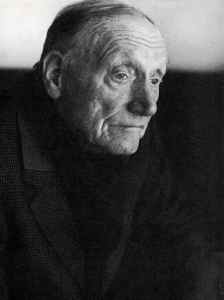Writers frequently chose to create stories that are inspired by or directly based on actual events. Adapted real people into fiction is especially prominent in historical novels. However, depending on the story and the writer, these adaptations may vary significantly. Sometimes real people are recreated in realistic detail based on available historical sources. At other times, the basic events and people are altered for dramatic effect, or to distance the story from the facts to avoid a controversy. This post will look at the ways several different authors have chosen to adapt historical people and events into actual settings.

Kentucky poet and novelist Robert Penn Warren often chose to fashion fiction based on real people and events, but modified them for dramatic and artistic purposes. His most famous novel, All the King’s Men, centers on corrupt populist governor of an unnamed Southern state who is ultimately assassinated by a doctor. Warren’s story of Willie Stark was heavily inspired by that of Louisiana governor Huey Long, though the specifics of events and characters have been significantly altered. Likewise, Warren’s novel World Enough and Time, was heavily inspired by the Kentucky Tragedy of 1825, where a promising young lawyer murdered a judge. The story of the novel’s principal character, Jeremiah Beaumont, hews closely to the real Jereboam Beauchamp for most of the novel, though the stories diverge when it comes to the protagonist’s ultimate fate. Warren did, however, chose to explicitly portray real events and put his words in the mouth of real people for his narrative poem Brother to Dragons. The poem portrays, though description, monologue, and dialogue between characters, the 1811 murder of a young slave by Thomas Jefferson’s nephew, and its effect on Jefferson himself. In this case, Warren choses to speak as Jefferson and other characters to address the ramifications of the event head-on.
Other novels are more unabashed about entering the minds and tongues of historical figures. In his Seven Dreams sequence of novels about the collision of Europeans and Native Americans, William T. Vollmann almost entirely utilizes real people. In the series’ most recent installment, The Dying Grass, Vollmann depicts both sides of the Nez Perce War of 1877. Relying on meticulous ethnographic research and primary sources, including journals, autobiographies, oral histories, and photographs, Vollmann resurrects a large cast of American soldiers and Nez Perce men and women, now long deceased, and animates their lives in detail.

James Michener, prolific author of many historical sagas, chooses a sort of ‘middle’ approach. Most of his books feature recurring generations of the same families, effecting and affected by the changes in places such as Texas, Hawaii, and Alaska, as well as South Africa, Israel, and other countries. Michener novels typically focus primarily on fictional characters, with real people serving as walk-ons during important events. Texas, for example, includes explorer Cabeza de Vaca in it chapter on New Spain and Sam Houston and Stephen Austin in its chapter on the Texan War of Independence, with original characters from the Quimper, Cobb, and Garza families along for the ride. Various incidents from Texas history are also modified and fictionalized throughout the book so that Quimpers and Garzas can take part.
One last, curious instance is Wallace Stenger’s novel, Angle of Repose, which caused controversy on its publication for its lengthy excerpts from the real journals of Mary Hallock Foote, an artist from the East Coast who followed her mine-engineer husband across the American West in the late 1800s. In the novel, these excerpts become the journal of the narrator’s grandmother and a way for him to reflect on the changing country around him. Over the course of the novel, Foote’s journal is modified to fit the story. Names are changed, as are some events. A climactic tragedy is invented. Yet, large portions of the novel are still the direct work of another, leading to some accusations of plagiarism. Stenger initially obtained permission from Foote’s descendants to use excerpts from her journal in a nonfiction biography. The ultimate fictionalization of Foote’s journals led to some confusion and mixed reactions from Foote’s descendants, and this has furthered the controversy that has followed the novel for years.
Ultimately, a novelist has a variety of possibilities when choosing to recreate historical people and events. The reasons for those choices may vary significantly. Some writers may want the freedom to mold a story as they see fit and so change names and events. Others may find virtue in clinging as closely to recorded fact as possible, so that the story might resonate more fully with the real world, though dropping the veil of fiction might invite controversy. Ultimately, the risks and rewards of that choice are in the author’s hands, and the results in the eyes of readers.
-Scott Ondercin
